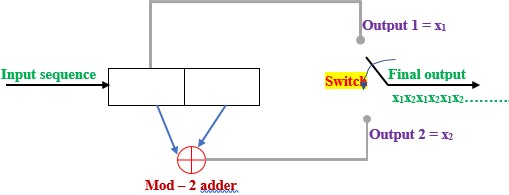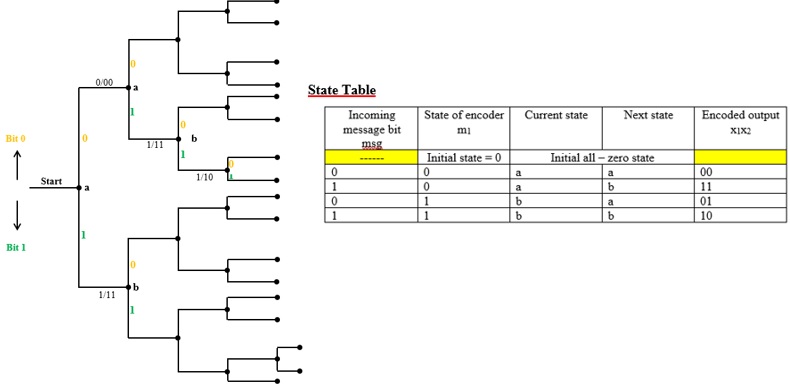(2,1,1) convolutional code |solved problem |Tree diagram
Q. Below figure depicts a rate ½, constraint length L = 1, convolutional encoder. Sketch the Tree diagram. Also find encoder output for input data: 11101

Step 1:

Step 2:

Step 3:

Step 4:

Step 5:

Graphical representation of Convolutional codes
3 different but related graphical representations can be used to study of convolutional encoding.
- Code tree = Tree diagram
- Code trellis = Trellis diagram
- State diagram
Note that we can easily find output of the encoder from any of the above diagrams.
Given a sequence of message bits and the initial state, you can use any of following 3 diagrams to find the resulting output bits.
Code Tree
The convention used to distinguish the input binary symbols is as follows:
Input 0 —- specifies upper branch
Input 1 —- specifies lower branch
Each branch of the tree represents an input symbol, with the corresponding pair of output binary symbols indicated on the branch.
It is often convenient to represent the codewords of a convolutional code as paths through a code tree. A convolutional code is sometimes called a (linear) tree code.
Code tree: the left most node is called the root. Since the encoder has 1 binary input, there are 2 branches stemming from each node. (starting at the root). The upper branch leaving each node corresponds to input 0 and the lower branch corresponds to the input digit 1. On each branch we have 2 binary code digits viz., the 2 outputs from the encoder.
Each branch of the tree represents an input symbol, with the corresponding pair of output binary symbols indicated on the branch.